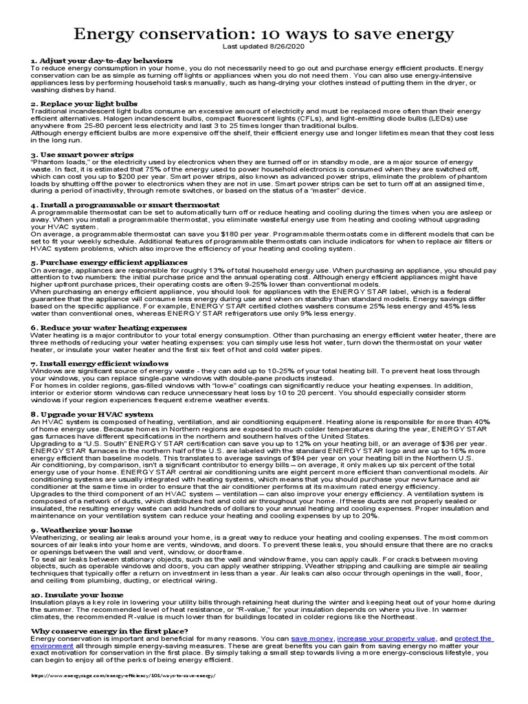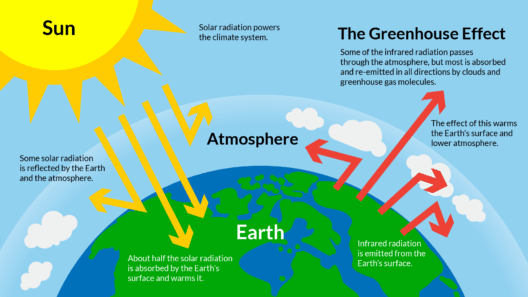The greenhouse effect is a naturally occurring phenomenon that plays a critical role in maintaining the Earth’s temperature conducive to life. However, human activities have intensified this process, leading to accelerated global warming. To fully understand what causes the greenhouse effect, it is essential to explore various contributing factors and how they interact in our atmosphere. But have you ever wondered what would happen if the greenhouse effect were to spiral out of control? What challenges would we face in such a scenario? In this exploration, we will delve into the mechanisms driving this phenomenon, the primary agents behind it, and the ensuing implications for our planet.
Understanding the basics of the greenhouse effect requires a clear grasp of the role of greenhouse gases. Simply put, these gases trap heat in the atmosphere, preventing it from escaping back into space. This creates a thermal blanket around the Earth, which keeps our planet warm enough for ecosystems to thrive. However, when human activities release excessive amounts of greenhouse gases, the balance is disrupted, contributing to rising global temperatures. Let’s examine the primary culprits one by one.
Carbon Dioxide: The Dominant Offender
Among the myriad of greenhouse gases, carbon dioxide (CO2) reigns supreme as the most significant contributor to global warming. This gas predominantly enters the atmosphere through the combustion of fossil fuels such as coal, oil, and natural gas. Industrial processes, deforestation, and land-use changes further exacerbate its levels, creating a cumulatively alarming impact. Notably, every liter of gasoline burned generates approximately 2.3 kg of CO2.
As carbon dioxide persists in the atmosphere for centuries, its long-term effects cannot be overstated. One of the key aspects to grapple with is the role of carbon capture and storage—emerging technologies that aim to mitigate CO2 emissions but often face economic and technical hurdles.
However, the push for renewable energy sources has garnered momentum in recent years, aiming to reduce our dependence on fossil fuels and consequently lower CO2 emissions. Will these initiatives be enough, or will the inertia of established energy systems prove too formidable?
Methane: The Potent Problem
Methane (CH4) is another major actor in the greenhouse gas saga, albeit with a potency that surpasses carbon dioxide by over twenty times in the short term. Sources of methane emissions are remarkably diverse, ranging from livestock digestion (enteric fermentation) to landfills where organic waste decomposes anaerobically. Rice paddies and natural gas production also contribute significantly to methane concentrations.
Despite its shorter atmospheric lifespan (around a decade), the immediate impacts of methane can inflict serious harm on climate stability. Efforts to curtail methane emissions often revolve around improving agricultural practices and waste management systems. Researchers continually investigate innovative strategies to capture methane emissions before they reach the atmosphere. Will we be able to harness these technologies efficiently enough to thwart the looming crisis?
Nitrous Oxide: The Silent Contributor
Nitrous oxide (N2O), though present in smaller quantities, is yet another potent greenhouse gas that warrants examination. This gas primarily originates from agricultural practices, particularly the use of synthetic fertilizers that significantly enhance soil nitrogen levels. The application of such fertilizers has increased exponentially, particularly alongside the Green Revolution, which aimed to bolster food production. While agricultural yields indeed saw significant improvement, the trade-off has become a sustainable dilemma.
Moreover, certain industrial processes and even the combustion of fossil fuels release nitrous oxide as a byproduct. Standing at approximately 298 times more effective than carbon dioxide over a century, the effects of nitrous oxide cannot be overlooked. Thus, agricultural innovation that promotes organic farming and sustainable practices is crucial. But just how far are we willing to adapt for the sake of future generations?
The Role of Water Vapor: Nature’s Own Greenhouse Gas
Among all greenhouse gases, water vapor constitutes the largest share in terms of volume. However, it’s unique because its presence is largely a result of natural processes, such as evaporation and transpiration from plants. Yet, warmer air holds more water vapor, thereby creating a feedback loop that exacerbates warming. This intricate interplay makes it a challenging variable to control.
Since human activities indirectly influence water vapor levels by altering temperature, the present warming trends raise stark questions about the future course of climate dynamics. The reality is, even if we stabilize CO2 and methane levels, the impacts of water vapor may still propel global temperatures higher. What scenarios might unfold if we fail to address this conundrum?
Consequences of Escalating Greenhouse Gas Concentrations
As these greenhouse gases accumulate in the atmosphere, the consequences become increasingly dire. The most immediate and observable effect is the rise in global temperatures. This temperature increase, in turn, catalyzes various far-reaching impacts, such as polar ice melt, rising sea levels, altered precipitation patterns, and more frequent extreme weather events.
Moreover, climate change engenders significant ecological disruption, threatening species extinction and altering habitat viability. Food security also hangs in the balance, as changing climatic conditions affect agricultural productivity. Essentially, the ramifications of unchecked greenhouse gas emissions spill over into virtually every aspect of human life.
The question thus arises: are we prepared to confront the challenges that lay ahead? Will international cooperation and individual actions combine effectively to combat this pressing issue? It remains a daunting challenge, but the messages from the climate scientists and environmental advocates are unequivocal. Quick action is now more vital than ever.
In conclusion, understanding the mechanics behind the greenhouse effect and its triggers is imperative to forge a sustainable path. As the world grapples with reshaping its relationship with greenhouse gases, it will require ingenuity, determination, and collaboration on a global scale. The future of our planet hangs in the balance, and every action counts. A single question lingers: are we willing to unite our efforts to ensure a habitable Earth for generations to come?








